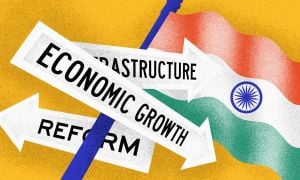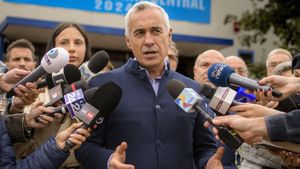Hurricane Milton recently wreaked havoc across Florida, following just weeks after Hurricane Helene had already left its mark. With Milton making landfall on October 10, the storm brought devastating winds and heavy rains, resulting in at least 23 fatalities and leaving millions without power. It was another blow just days before important elections and during the peak of hurricane season, reminding Floridians of the unpredictable and powerful forces of nature.
Originated as just another weather system over the Gulf of Mexico, the storm rapidly intensified to become a Category 3 hurricane with maximum sustained winds reaching 120 mph. Unlike Helene, which wreaked havoc mainly with massive flooding, Milton compounded the issue by bringing with it tornadoes and flash flooding. Such conditions forced around half a million residents to evacuate their homes, leading to bumper-to-bumper traffic on Interstate 4 and many other routes.
The atmosphere during the days leading up to Milton's landfall was thick with anxiety. Many affected residents were still grappling with the aftermath of Hurricane Helene, which struck the same area only two weeks earlier. The streets were littered with debris from homes destroyed or damaged, notifying everyone just how perilous these storms can be.
Emergency boards and local communities scrambled to prepare for the storm. Residents boarded up windows, locked away valuables, and stocked up on essentials. Immediately following the storm’s landfall, reports of chaos trickled out, with emergency responders halted from assisting due to unsafe conditions caused by high winds and rising waters.
Across the state, approximately 3 million households found themselves without electricity. Images from neighborhoods reflected the extensive damage—roofs blown off houses, trees downed on cars, and entire buildings ripped apart.
But not every corner of Florida faced the brunt of the storm. A net-zero community known as Hunters Point, located near Cortez, withstood the storm surprisingly well. This innovative development features energy-efficient homes equipped with solar panels and hurricane-resistant structures. Built higher than typical standards and reinforced with steel straps, homes were elevated and protected from the rising waters. Despite Milton's onslaught, the community's solar batteries kept the lights on, demonstrating the reliability of sustainable energy systems even amid chaos.
Meanwhile, as the damage assessments began, aid organizations quickly mobilized. CityServe, for example, sent emergency supplies, food, and clean water to the hardest-hit areas. Their innovative church-based network played a pivotal role, ensuring supplies reached those often missed by government disaster responses. Senior Vice President Todd Lamphere emphasized the importance of community support, stating, “Facing storms of this magnitude so close to each other is an incredible challenge. I want everyone affected to know you’re not alone.”
Further complicate matters are the political ramifications of the storms occurring so close to the upcoming elections. Researchers have shown past hurricanes can influence voter behavior and turnout. For incumbent candidates, how well the government responds to disaster can create either goodwill or resentment among voters. Amid these calamities, President Biden's administration has received mixed feedback, with polls indicating approval ratings showing voters divided down party lines.
Floridians, weary from recent events, worried about their ability to cast votes amid damage and disruptions caused by the dual hurricanes. Past events, like Hurricane Sandy, have shown how such disasters can lead to decreased voter participation due to polling locations being compromised, and access hindered. Local election boards are working to adjust voting procedures, making accommodations for residents still reeling from these storms.
Many neighborhoods are left grappling with how they will recover from Milton, as recovery from Helene is still underway. Community bonds are tested and strengthened, and resources are strained but mobilized. Amidst despair, the resilience and solidarity of communities shine brightly under the dark cloud of these hurricanes. This is the spirit of Florida—fiercely hopeful, supporting one another through crisis.
Citizens cling to hope and recover slowly, sorting through debris and staring down the aftermath of destruction. While the road to recovery may be lengthy, tales of resilience arise from the wreckage, illustrating both the strength and unity of the Florida spirit.



